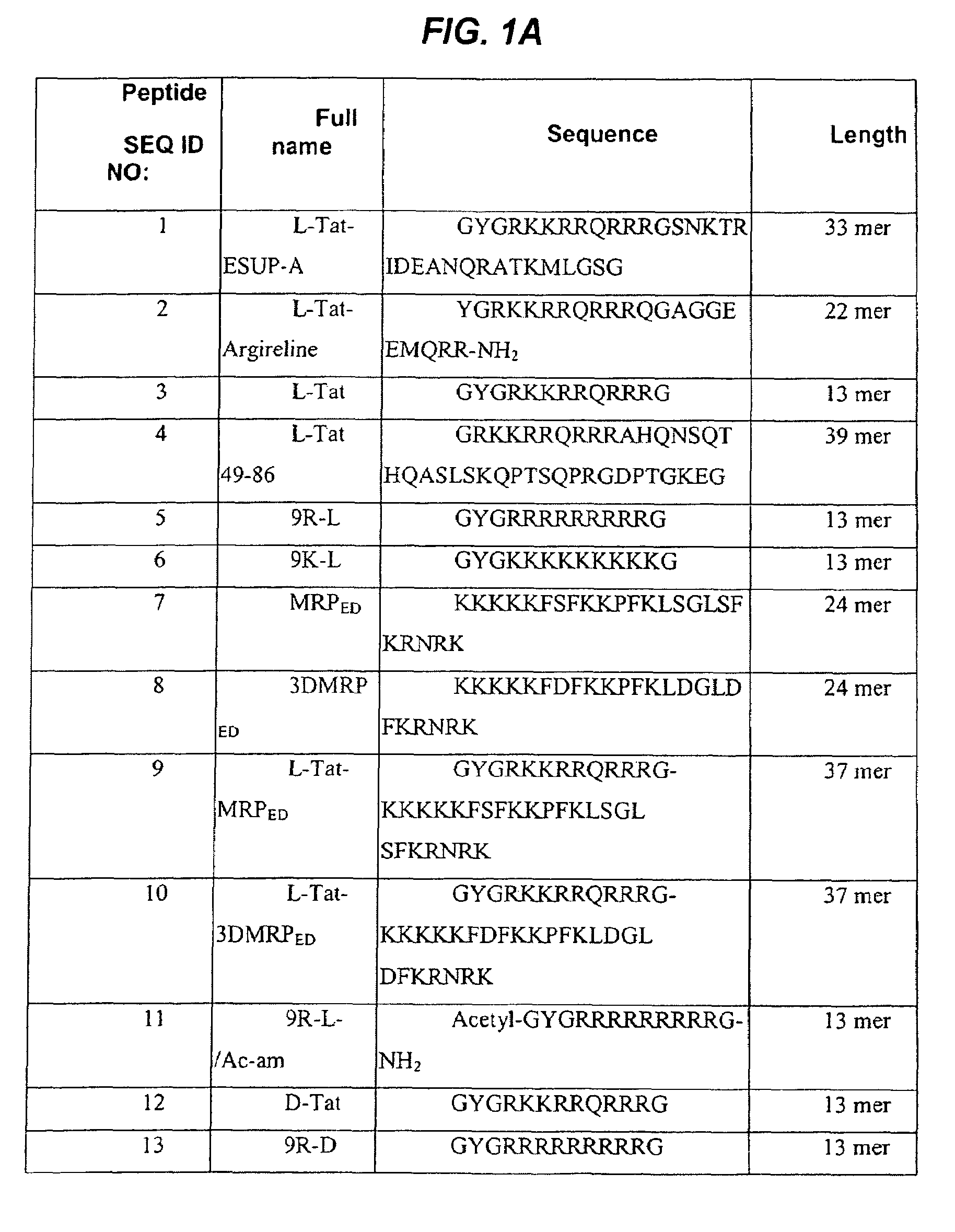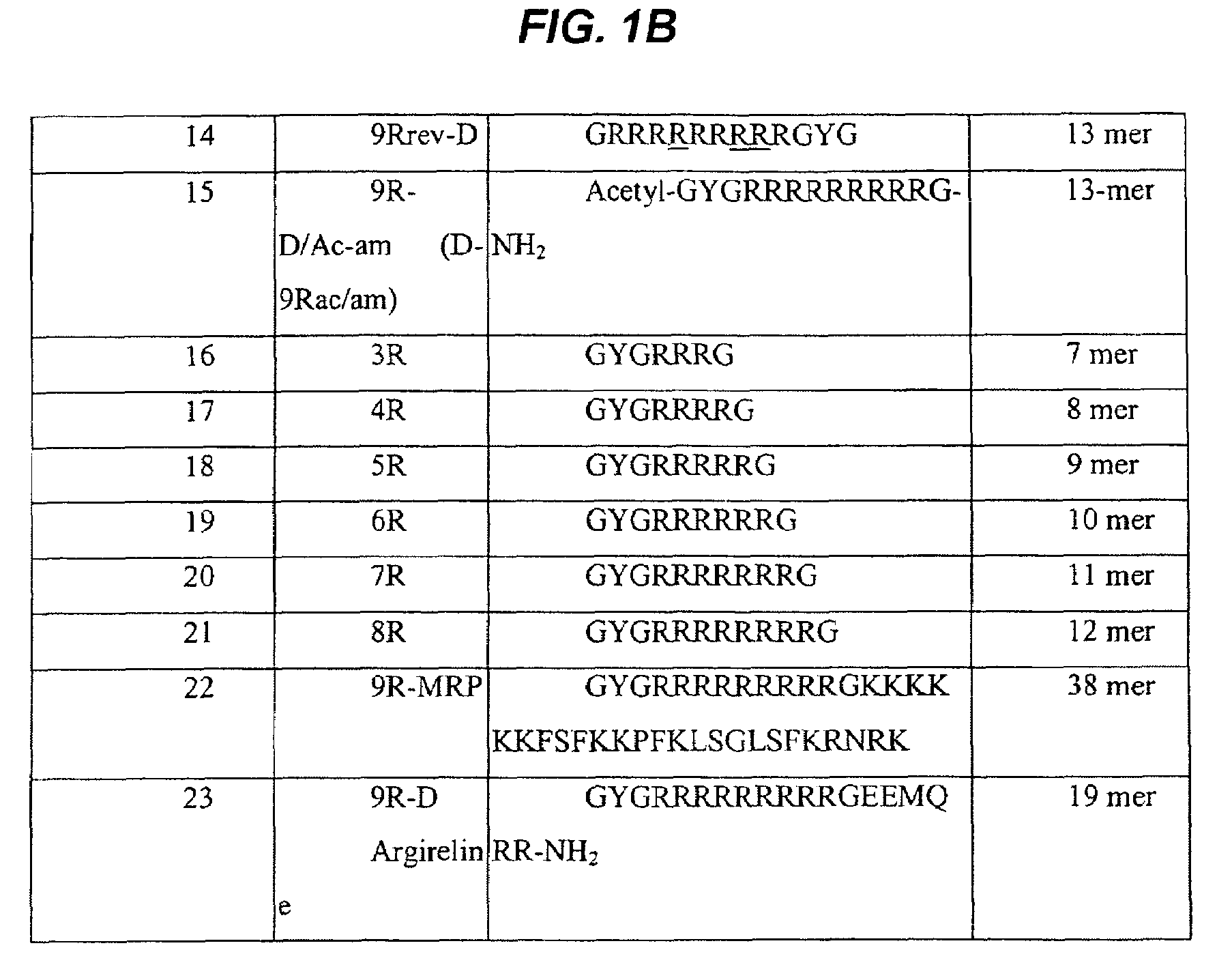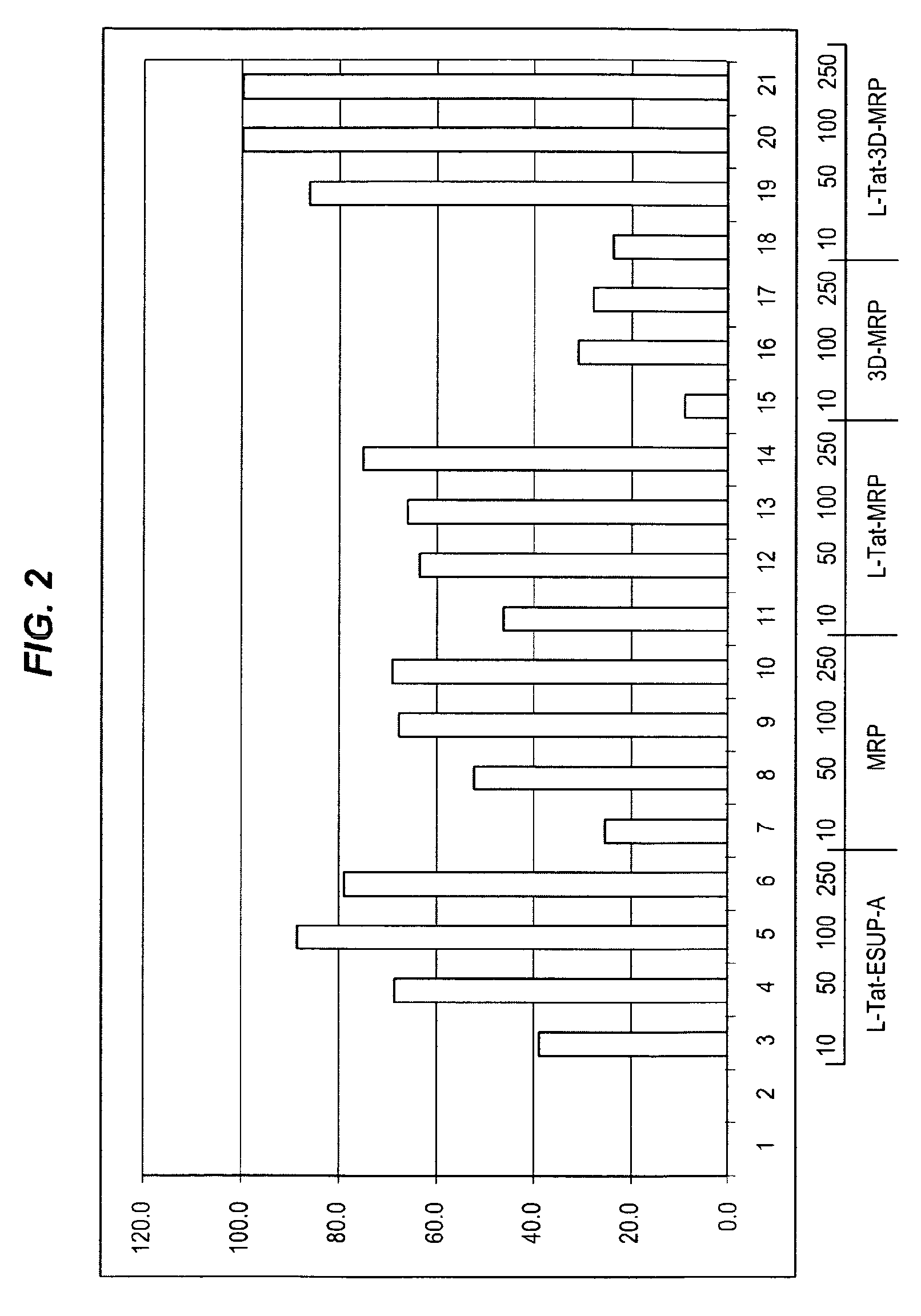Synthetic peptides for use as inhibitors of neurotransmitter secretion and as inducers of cellular relaxation
a technology of neurotransmitter secretion and synthetic peptides, which is applied in the preparation of peptides, depsipeptides, peptide/protein ingredients, etc., can solve the problems of immunogenicity, inconvenient administration of intra-muscular injections, and skin wrinkles that are more wrinkled and stiff, so as to reduce the depth of wrinkles and wrinkles, increase the effect of wrinkle size and reduce the rate of wrinkle siz
- Summary
- Abstract
- Description
- Claims
- Application Information
AI Technical Summary
Benefits of technology
Problems solved by technology
Method used
Image
Examples
example 1
Synthesis of L- and D-Peptides
[0145]Synthetic peptide sequences were prepared and characterized as described below. All amino acids used during the synthesis were L-amino acids or D-amino acids (Calbiochem-Novabiochem AG) as indicated in FIG. 1.
[0146]Peptide synthesis The peptides shown in FIG. 1 (SEQ ID NOs 1-23) were chemically synthesized by standard solid phase Fmoc chemistry on an Applied Biosystems 431A Peptide Synthesizer. The peptides were prepared using p-alkoxybenzylalkohol resin (Wang, Bachem, Switzerland). The synthesis was performed using a five-fold excess of Fmoc amino acid derivatives, DCCI and HOBt as activating agents and a 60 minute coupling time. Side chain protecting groups included: triphenylmethyl group for asparagines, glutamine, cysteine and histidine (Asn, Gln, Cys and His); pentamethyl-chroman-sulfonyl group for arginine (Arg); t-butyloxycarbonyl group for lysine and tryptophan (Lys and Trp); t-butyl group for aspartic acid, glutamic acid, serine, threonin...
example 2
Synthesis of Retro-Inverso Isomers
[0150]Peptides of the invention may be all-D amino acid peptides synthesized in reverse to prevent natural proteolysis (i.e., all-D-retro-inverso peptides) (See U.S. patent publication 20050106695). An all-D retro-inverso peptide of the invention provides a peptide with functional properties similar to the native peptide.
[0151]The procedures for synthesizing a chain of D-amino acids to form the retro-inverso peptides are known in the art. See, e.g., Jameson et al., Nature 368:744-46, 1994; Brady et al., Nature 368, 692-93, 1994; Guichard et al., J. Med. Chem. 39:2030-39, 1996. Specifically, the retro-peptides are produced by classical F-moc synthesis and further analyzed by Mass Spectrometry as described above. They are purified by HPLC.
[0152]An exemplary retro inverso peptide was synthesized using Fmoc chemistry and the 9R-D peptide (GYGRRRRRRRRRG) (SEQ ID NO: 13) was replaced by the 9Rrev-D peptide (GRRRRRRRRRGYG) (SEQ ID NO: 14).
example 3
Assessment of Neurotransmitter Secretion
[0153]Differentiation and Neurotransmitter Secretion Assays. In order to assess the efficacy of the peptides of the invention on neurotransmitter secretion, a functional experimental model to study vesicular neurotransmitter release was first established.
[0154]The rat phaeochromocytoma (PC12) cell line, derived from a rat adrenal gland phaeochromocytoma [Greene et al., Proc Natl Acad Sci USA, 73: 2424-8, 1976], is commonly used as an in vitro model for both neurosecretory and neuronal cells (Greene et al., Proc Natl Acad Sci USA, 73:2424-8, 1976; Tischler et al., Lab Invest. 39:77-89, 1978). Since PC12 cells display vesicular catecholamine release upon stimulation (Chen et al., Am J Physiol, 266:C784-93, 1994) and uses the same conserved machinery that functions in synaptic neurotransmission (Burgoyne et al., Ann N Y Acad Sci, 710:333-46, 1994; Burgoyne et al., Trends Neurosci, 18:191-6, 1995; Burgoyne et al., Bioessays, 20:328-35, 1998), the ...
PUM
| Property | Measurement | Unit |
|---|---|---|
| temperature | aaaaa | aaaaa |
| flow rate | aaaaa | aaaaa |
| volume | aaaaa | aaaaa |
Abstract
Description
Claims
Application Information
 Login to View More
Login to View More - R&D
- Intellectual Property
- Life Sciences
- Materials
- Tech Scout
- Unparalleled Data Quality
- Higher Quality Content
- 60% Fewer Hallucinations
Browse by: Latest US Patents, China's latest patents, Technical Efficacy Thesaurus, Application Domain, Technology Topic, Popular Technical Reports.
© 2025 PatSnap. All rights reserved.Legal|Privacy policy|Modern Slavery Act Transparency Statement|Sitemap|About US| Contact US: help@patsnap.com



